Overview
| Top |
|
Using Non-Numeric Tags |
Content |
|||||||||||||
|
Overview |
|
|
During Data Entry, some configurations may require entering/returning text that either describes numeric data or explains why it could not be entered. Such text is referred to as a "non-numeric tag" (or "NNT"). For example, assume that a value <5 is considered to be BDL (below detection limit). If the numeric data value is 4, you may want to make BDL a non-numeric tag in order to:
| • | Enter BDL rather than 4 |
| • | Enter 4 and return BDL |
Such results are possible by configuring these entities:
| Entity | Description |
| Parameter Limit Types | Non-numeric tags such as BDL (below detection limit) and Nil (no value) are defined as Parameter Limit Types. |
| Limit Rules | If you want to return the textual values (BDL or Nil) when the respective Parameter Limit Types are met, use Limit Rules to define how data are displayed when the respective Parameter Limit Types are met (or not met). You can also use Limit Rules to do things such as return <5 when you enter 4. |
| Parameter Lists | The actual numerical limits for each are defined by the Parameter Limits specified in the Parameter List. For example, BDL could define a value <5, while Nil could define a value <1. Entering 4 causes the BDL Parameter Limit Type to be met, while entering 0.7 causes the Nil Parameter Limit Type to be met. |
| Specifications | When text such as BDL or Nil are entered, Specification Limits cannot be used because they define only numerical ranges. To evaluate textual entry against a Specification, Specifications provide a Limit Type Rule, which associates a Parameter Limit Type (such as BDL) with a Spec Condition (such as Warning). |
Example of Non-Numeric Tags |
|
|
First, create two Parameter Limit Types: "BDL" and "Nil".
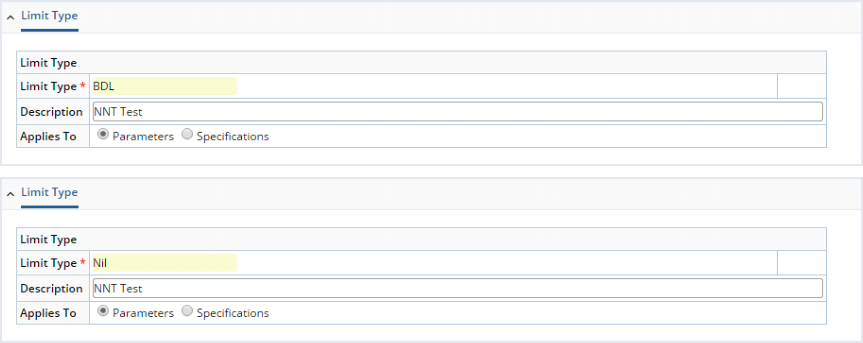 |
We want our results to be distinctly color-coded according to the Spec Condition, so we add a "Warning" Reference Value to the "Data Item Condition" Reference Type:
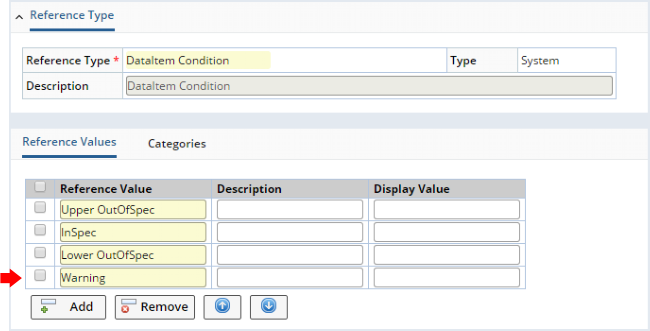 |
Next, we create a Limit Rule:
| • | For the "BDL" Parameter Limit Type: When the Parameter Limit is "Met", the Limit Rule displays "BDL" and evaluates the Spec Condition as "Warning". |
| • | For the "Nil" Parameter Limit Type: When the Parameter Limit is "Met", the Limit Rule displays "Nil" and evaluates the Spec Condition as "Lower Out of Spec". |
Although not required in this example, note that you can also have the Limit Rule apply a Transformation Rule to numerical data.
 |
We will be setting up these numerical limits:
 |
We create the Parameter List, set the Parameter Limits, and configure:
| • | Specify the "Limit Rule" you just created. |
| • | For the "BDL" Limit Type Id, the Parameter Limt is <5. |
| • | For the "Nil" Limit Type Id, the Parameter Limit is <1. |
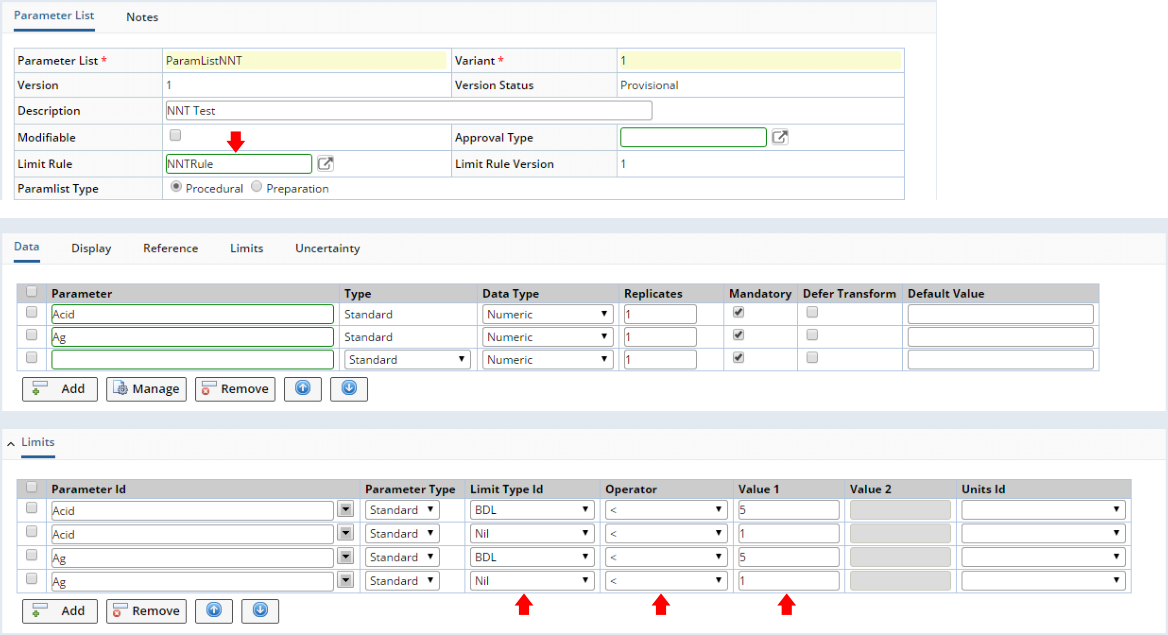 |
We create the Specification, set the Specification Limits, and configure:
| • | Specify the "Limit Types" for three different Spec Conditions. |
| • | Set the Specification Limits as shown. |
| • | For the "Limit Type Rule", choose "Nil" to indicate "Fail" and "BDL" to indicate "Warning". |
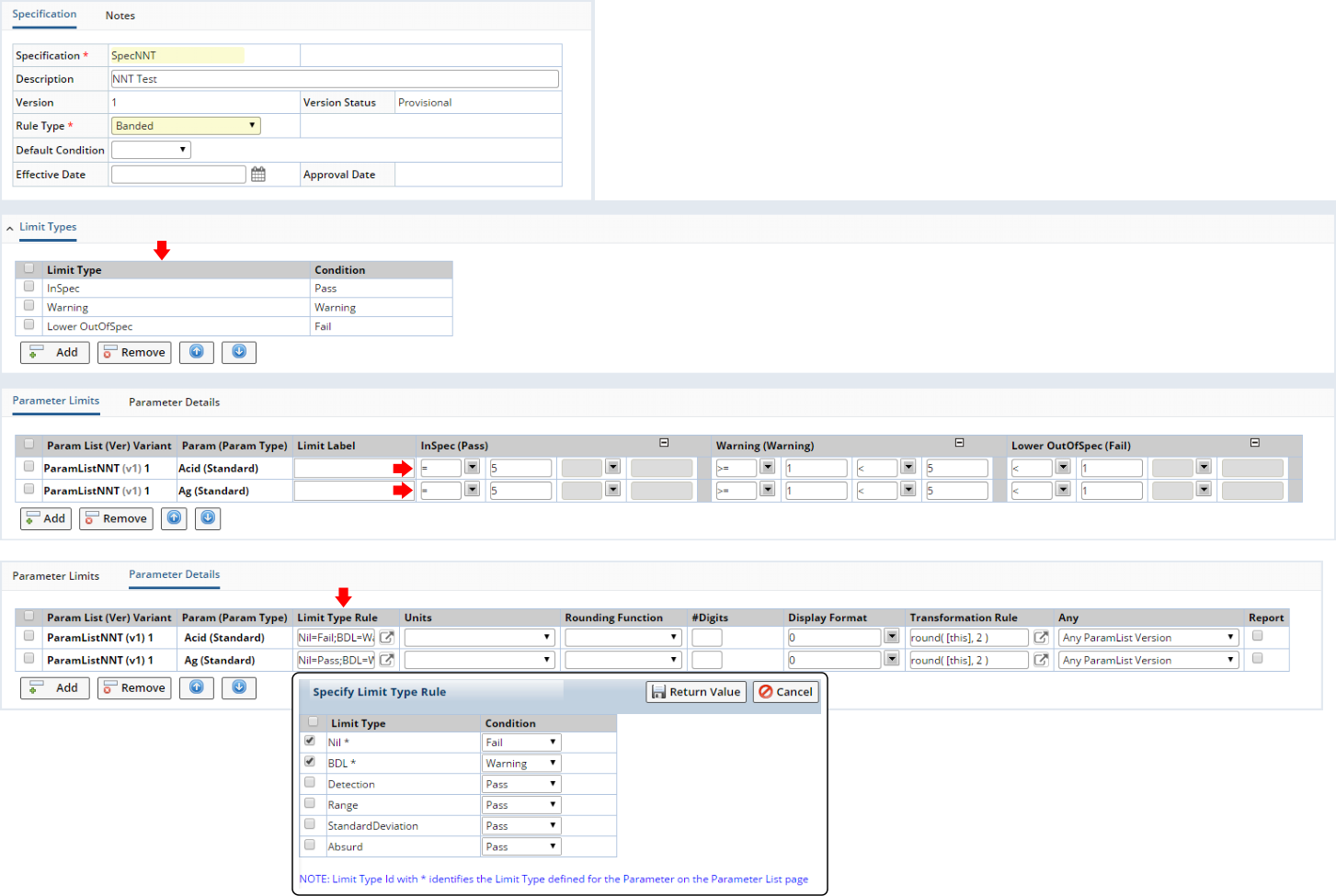 |
Add the Data Set and Specification to a Sample, then perform Data Entry.
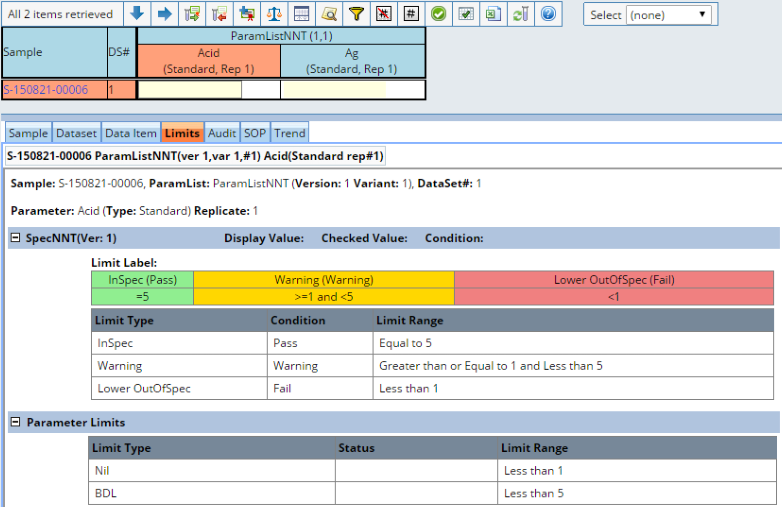 |
Entering 5 formats the value for a "Pass" Data Item Condition (green) with defined numeric formatting:
 |
Entering 4 formats the value for a "Warning" Data Item Condition (orange) and displays "BDL":
 |
Entering 0.7 formats the value for a "Fail" Data Item Condition (red) and displays "Nil":
 |
Entering "BDL" or "Nil" applies the defined Spec Condition formatting (orange for BDL, red for Nil):
 |